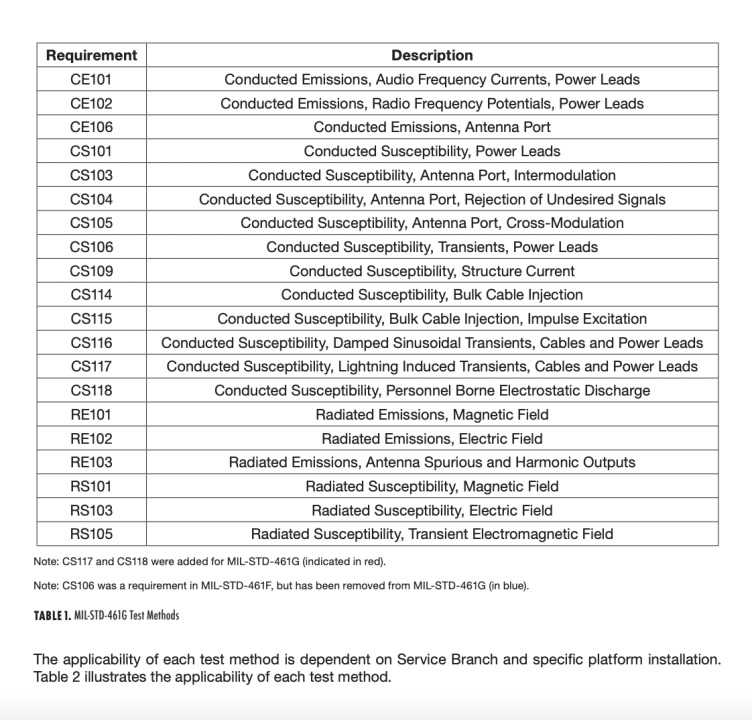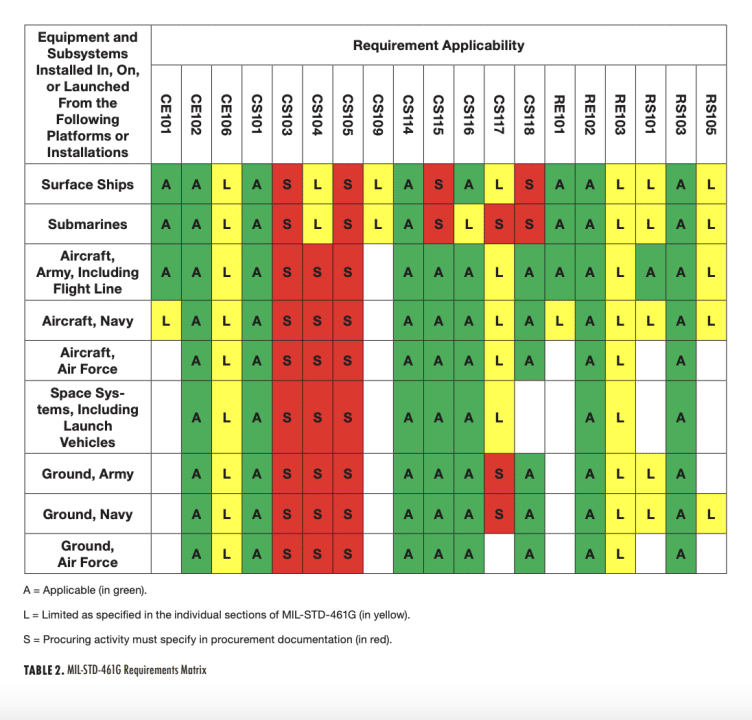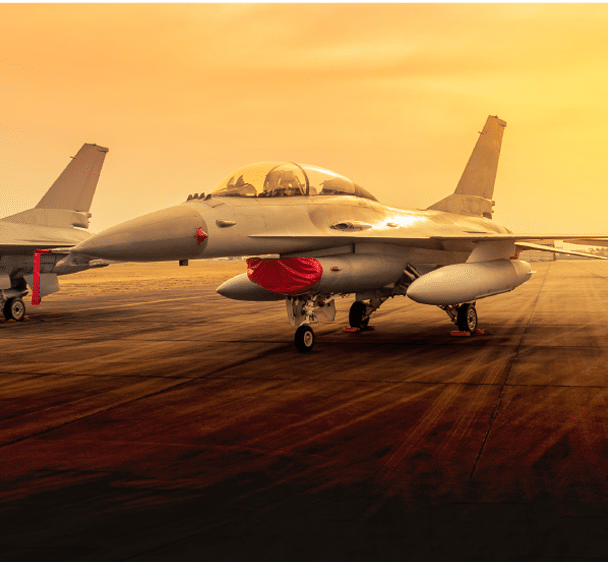Where MIL-STD-464C serves as a system/platform level set of requirements, MIL-STD-461G serves as an equipment/subsystem level set of requirements. Similar to MIL-STD-464C, MIL-STD-461G was developed as an “Interface Standard” to allow usage without a waiver. The overall structure of the two documents is also the same in that both have a contractual main body and a very informative non-contractual rationale and lessons-learned appendix. However, unlike MIL-STD-464C, MIL-STD461G provides pass/fail criteria, limits, test levels and detailed procedures. The purpose of MIL-STD461G is to control EMI characteristics of equipment/ subsystems procured by the DoD to increase the likelihood of compatibility in its EME. It is not applicable for platforms/systems or modules/parts. Applicable items include enclosures no larger than an equipment rack, electrical interconnections that are discrete wiring harnesses between enclosures and electrical power derived from prime power sources. Requirements depend on equipment/subsystem type and use and may be tailored. It is important to note that passing MIL-STD-461G testing does not ensure platform level EMC and failing MIL-STD464G testing does not necessarily mean a platform EMI problem.
As background, MIL-STD-461 is officially prepared by the US Air Force, but it is the product of a Tri-Service Working Group (TSWG) made up, not surprisingly, of representatives from the Army and Navy as well. In addition to Service members there are industry representatives.
Since 1993, MIL-STD-461 has been on a five-year review cycle, to ensure that it remains current and useful. This does not mean a new revision has to be released every five years; just that a review must be performed on that cycle. It would be entirely acceptable to simply reaffirm the old version with no changes. To date, that hasn’t happened.
MIL-STD-461D and MIL-STD-462D released in 1993 remain the major “revolution” in military EMI standards, with evolutionary changes following. MIL-STD-461E combined MIL-STD-461 and MILSTD-462 into a single standard, obsoleting MILSTD-462 in 1999. MIL-STD-461F was released on 10 December 2007 and provided a number of changes from MIL-STD-461E, but the changes were minor in nature when compared to the changes between revisions D and E. MIL-STD-461G, released 11 December 2015, makes the most structural changes since that time, adding two new requirements (lightning indirect effects, CS117, and personnel electrostatic discharge, CS118) while eliminating the CS106 requirement that was added the last time around in MIL-STD-461F.
This guide will focus on MIL-STD-461G, but given the recent revision change and the fact that most programs are contractually under MIL-STD-461F, major differences between the two revisions will be highlighted as required. MIL-STD-461G imposes requirements in only four major areas for equipment and subsystems: Conducted Emissions (CE), Conducted Susceptibility (CS), Radiated Emissions (RE) and Radiated Susceptibility (RS) and are identified by a 1XX, to differentiate them from the earlier MIL-STD461A/B/C requirements that were numbered XX. The complete listing of test methods is shown in Table 1. CS106 in blue text was required in MIL-STD-461F, but was eliminated from MIL-STD-461G. CS117 and CS118 in red text were added to MIL-STD-461G. The following is not intended to serve as an all-inclusive tutorial on MIL-STD-461G, but rather an overview to illustrate how MIL-STD-461G is employed as a tool by the DoD to support the warfighter.







